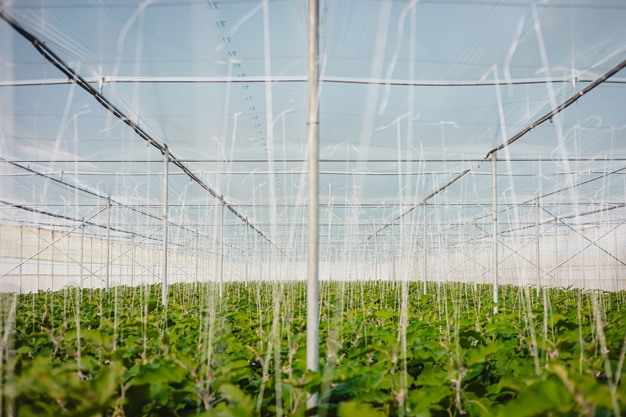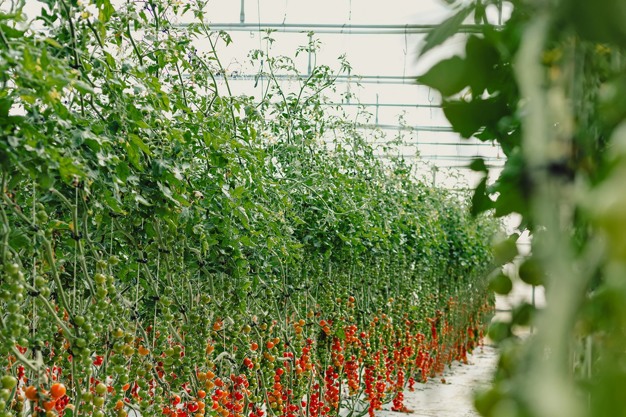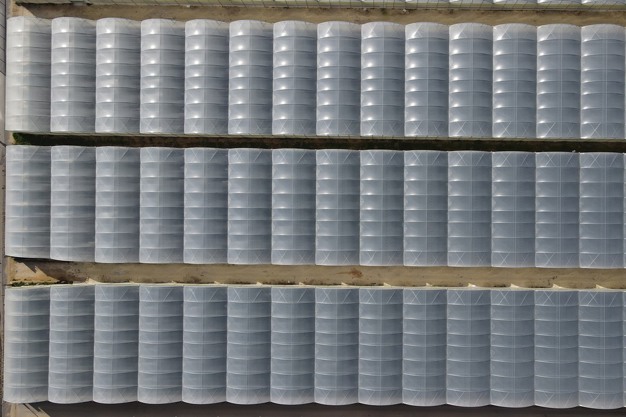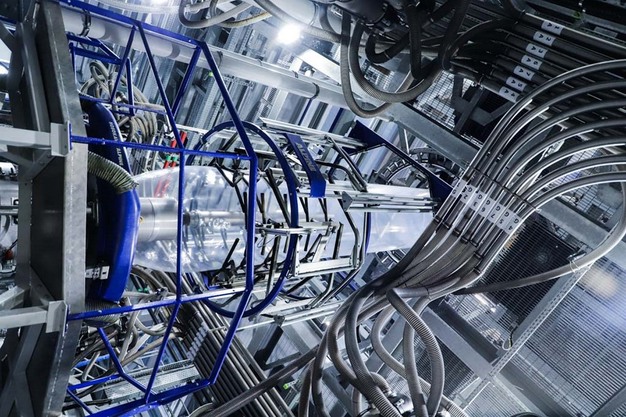For optimum greenhouse temperature control in hot and temperate climates, the technology most commonly used for plastic roofing films is diffused light with the aid of mineral fillers. Enrico Garrasi, sales manager at Agriplast, a global company specializing in the production of plastic films for agriculture, explains about this in more detail.
Enrico Garrasi - Sales Manager at Agriplast S.p.a.
"When manufacturing our high-quality plastic films," explains Garrasi, "silicate microelements are incorporated into the film compound, which have two main functions: filtering incoming sunlight and controlling heat energy entering and leaving the greenhouse.
 Aralux film covering a greenhouse
Aralux film covering a greenhouse
"If the first is important for properly controlling the quality of light by diffusing and distributing the sun's rays inside the greenhouse," continues the manager, "the second is fundamental for controlling the microclimate. It allows the thermal energy accumulated during the day to be maintained inside the greenhouse at night. In the same way, it blocks the influx of heat during the hottest hours of the day, thus absorbing temperature fluctuations, to the obvious benefit of the plants."
 Aralux film covering a greenhouse
Aralux film covering a greenhouse
"However, it is important to know that not all mineral fillers are the same, and therefore, not all light-diffusing plastic films have the same performance," he explains. "For example, there are mineral fillers that are much smaller than others and have higher thermal insulation coefficients, such as the ones Agriplast uses in the production of Aralux. This is a plastic film with the best possible combination of thermal insulation/diffusion/light transmission."
 Greenhouse covered with Aralux by Agriplast
Greenhouse covered with Aralux by Agriplast
Thanks to the high quality, extremely fine mineral fillers combined with the EVA (Ethylene-vinyl acetate) copolymer, which also has excellent insulating properties, the Aralux plastic film has an exceptional thermal performance (≥93%), the highest available on the market.
 Machines used to produce plastic film
Machines used to produce plastic film
"The mineral fillers we use," concludes Enrico Garrasi, "also make the film very good at diffusing solar radiation, distributing the light evenly inside the greenhouse while at the same time letting in a large amount of light to stimulate chlorophyll photosynthesis. The results in the field are very satisfactory. Plants are stronger with a more developed vegetative part, leaves are more open due to reduced thermal stress, and fruits are more uniform and productive."
For more information:![]()
Agriplast S.p.A.
Via Filippo Bonetta 35
97109 Vittoria (RG) – Italy
Tel.: +39 0932 997211
Email: [email protected]
www.agriplast.com
